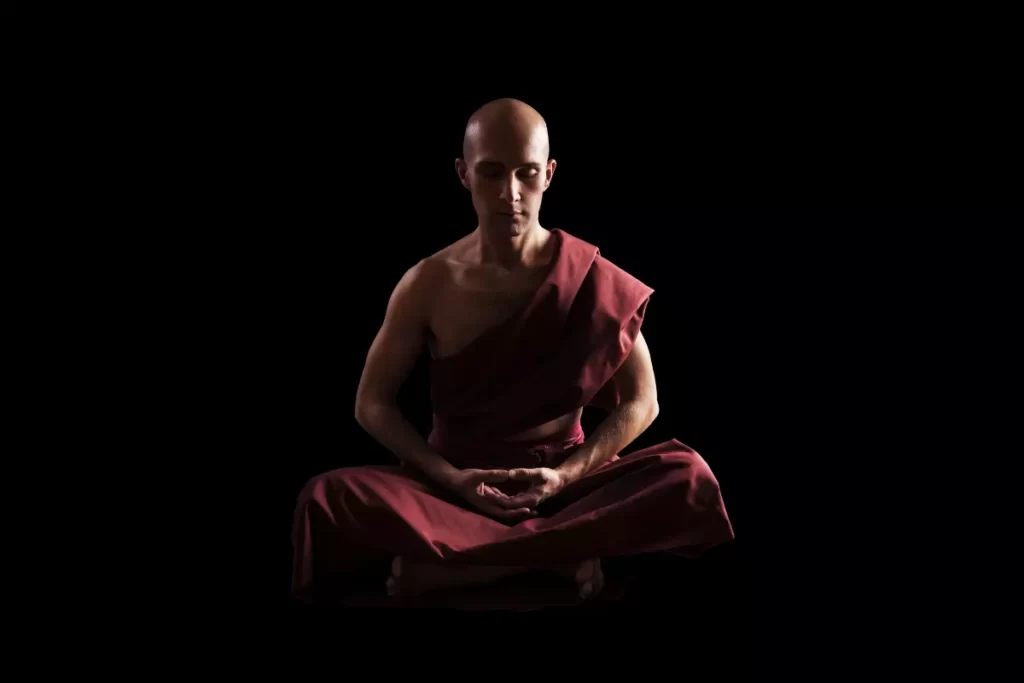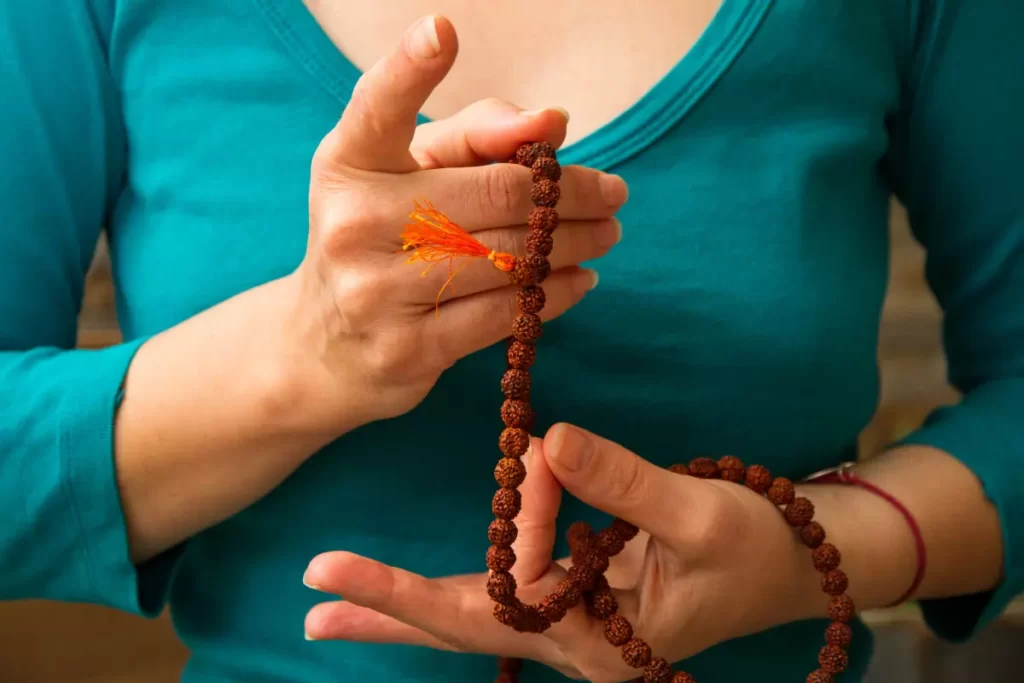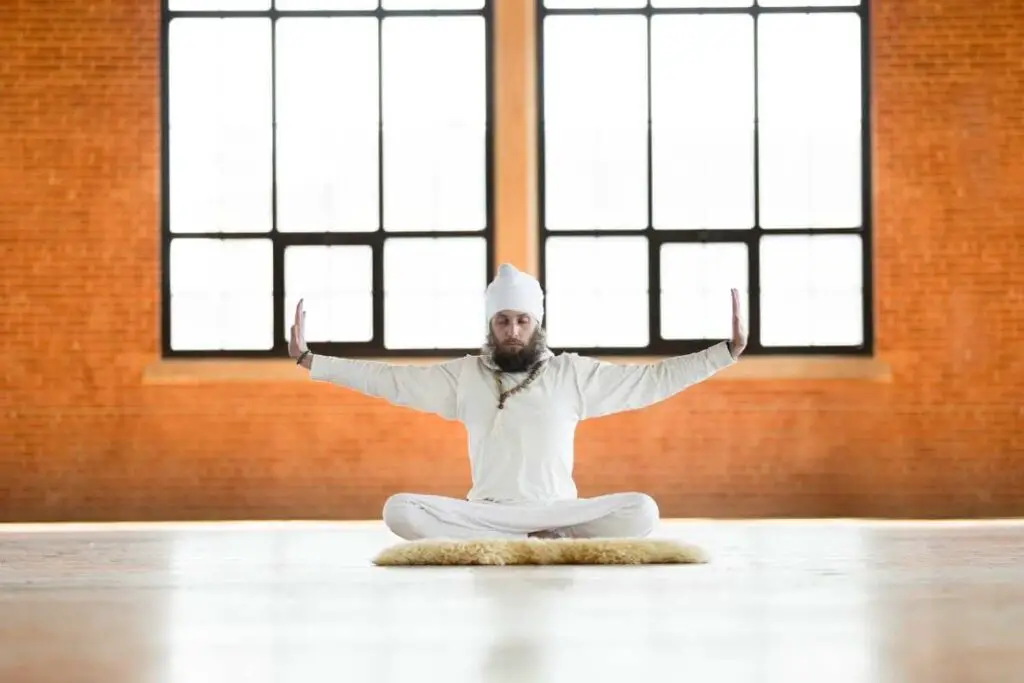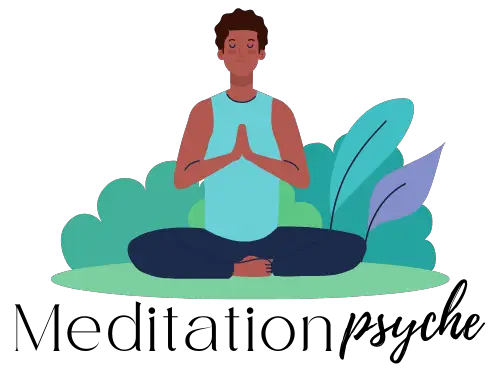Meditation is an ancient practice to raise human consciousness to attain enlightenment.
However, Nowadays, Meditation becomes popular for its benefits on our physical health, mental health, and overall well-being.
The spiritual leaders and ancient texts have introduced several different meditation techniques to make them available for each distinct personality so that every seeker can choose the most suitable practice for them.
You have the choice of so many meditation techniques that you may become confused about choosing the most suitable technique.
When I had started Meditation a few years ago, I had this same problem – which one to pick, then I tried almost all techniques and picked vipassana.
It’s confusing, right?
But not from now because, in this article, we will discuss different types of meditation techniques, their benefits, and for whom these are suitable and beneficial.
If finding the right Meditation is difficult for you, then I am sure, at the end of this article, your confusion will be gone, and you would be able to find your suitable meditation technique.
- Types Of Different Meditation Techniques
- 1) Body Scan Meditation
- 2) Vipassana Meditation
- 3) Loving-Kindness or Metta Meditation
- 4) Mindfulness Meditation
- 5) Breath Awareness (Mindful Breathing Meditation)
- 6) Mantra Meditation
- 7) Japa Meditation
- 8) Transcendental Meditation
- 9) Visuliazation Meditation
- 10) Active Meditation
- 11) Zen Meditation
- 12) Object Focused meditation
- 13) Kundalini meditation
- How To Make A Habit Of Meditation That Sticks?
- Final thought
- References
Types Of Different Meditation Techniques
1) Body Scan Meditation
As the name suggests, This Meditation practice includes observing your body and relaxing each body part. You can practice it while sitting on the floor or chair or lying down.
Here, you have to move your attention to different body parts and mentally order them to release the physical tension and be relaxed.
When you do this, your mind stops chattering and becomes calm and relaxed. Also, you may feel rejuvenated and refreshed like waking up from deep sleep.
Steps to practice body scan meditation:
- Find a quiet place and disconnect all dissections.
- Sit comfortably on the floor or on the chair with the spine erect and face slightly upturned. (Use meditation mat for better posture and more comfort)
- Slowly take 5-6 deep breaths.
- Then bring your attention at the top of your head and imagine it’s becoming free from stress and worries.
- Now slowly move your awareness on different body parts and visualize that they are becoming relaxed.
- Do this for 5-10 minutes or more.
In between this Meditation, if your mind wanders away, then kindly bring it back without being frustrated or tensed.
Benefits of body scan meditation
The regular practice of body scan meditation will help you to
- Improve concentration
- Lengthen attention span
- Reduce mental and physical stress
- Make you relaxed and rejuvenated
For whom body scan meditation is suitable
People who often feel mental and physical stress and can’t sleep well at night should practice this body scan meditation.
They should practice this Meditation twice a day, once in the morning or anytime throughout the day and once before going to bed.
At night, they can use Guided Yoga Nidra meditation, which is similar to body scan meditation.
2) Vipassana Meditation

Vipassana means to see as it or to see the reality.
What is reality or what to see?
See, the reality is that everything is changing and nothing is permanent in this material world. See, the impermanence nature of this world.
Vipassana is a very ancient meditation technique that was rediscovered by Gautama The Buddha. And It’s a mindfulness practice of observing the breathing process and your body sensations as a witness.
Steps to practice vipassana meditation:
- Find a quiet place and alleviate all distractions.
- Sit in cross-legged meditation posture with the spine comfortably erect
- Close your eyes and take few deep breaths.
- Focus your attention on the breathing, be aware of your breath moving in and out.
- Sense the touch of air at the tip of your nostrils.
- Do breathing meditation for 3-5 minutes.
- Then slowly move your attention from the top of the head to the tip of the toe and reverse, gradually cover all your body parts in a sequence.
- When you feel any type of sensation at the arrived body part, observe it objectively without making craving for a pleasant sensation or aversion for an unpleasant one.
- As soon as you feel any sensation, move to the next body part.
- Keep doing it for 10-15 minutes or more.
Like any meditation practice, as soon as you realized that your mind is carried away by thoughts and emotions, gently bring it back on track.
Benefits of vipassana meditation
Regular practice of vipassana could:
- Reduce craving and aversion nature of mind for good and bad or for pleasant and unpleasant; this will eventually lead to less misery and suffering.
- Improve resilience and self-control
- Provide peace and calmness
- Improve focus and lengthen the attention span
- Increase self-awareness
Vipassana meditation technique has become a medium of self-realization for many monks and people.
For whom vipassana is most suitable
People who are seeking better well-being and spiritual heightening can practice vipassana meditation.
If you are really interested in learning vipassana, then join 10 days Vipassana meditation course by S.N.Goenka near your location.
By the way, I have been practicing vipassana meditation for 3 years, and for me, it’s perfect.
3) Loving-Kindness or Metta Meditation
In loving-kindness meditation, we transfer positive emotions towards our loved ones, friends, relatives, family members, deities, and all beings.
When we generate emotions of love, kindness, devotion, compassion, or gratitude and transmit them to someone, It cultivates positivity in our hearts and minds; it also cleans the negative thoughts and feelings and replaces them with positive ones.
Steps to practice loving-kindness meditation:
- Sit in a cross-legged meditation posture with back straight and eyes closed.
- Slowly take 5-6 deep breaths in and out.
- Visualize the image of a person or being on whom you want to meditate.
- Now send your loving-kindness or positive feelings of love, gratitude, or devotion to that being.
- Do this for 5-10 minutes or more.
Benefits of loving-kindness meditation
The regular practice of loving-kindness meditation helps to:
- Cultivate positive thoughts and emotions in you.
- Alleviate negative impressions from your mind and enhance mental and emotional health.
- Balance your body, mind, and emotions, along with your life purpose.
Regular practice of metta meditation develops positivity in the mind and positivity emotions in the heart.
For whom loving-kindness meditation is most suitable
If you are a person struggling with negative emotions such as anger, anxiety, resentment, hatred, envy, etc., then loving-kindness meditation may help you to get rid of these.
However, if you want resilience in emotions and a peaceful state of mind, this meditation is for you.
Related Post: Metta Meditation Script
4) Mindfulness Meditation

Mindfulness is the quality of mind to be fully present, be aware of what you are doing or what is happening around you without incorporating your judgments. Also, it’s the practice of observing your body sensations, thoughts, emotions, or behaviors as a witness.
Mindfulness is the practice of bringing awareness to what you are doing.
For example, if you walk consciously, breathe consciously, eat consciously, or do any activity with absolute awareness, it becomes meditation and grows Mindfulness in you.
With Mindfulness, you stay free from compulsive behaviors, and the heap of impressions that you have gathered can’t drive you in a wrong way.
Steps to practice mindfulness meditation:
- Find a quiet place and disconnect all distractions.
- Sit in a cross-legged posture with eyes closed and spine comfortably erect.
- Now pay close attention to your natural breathing and notice when breath comes in and out; also, notice the length of breath and your belly movement.
- Observe the sensations happening in your body without making any judgments about them.
- Do it for 10-15 minutes or more.
Actually, you can practice Mindfulness anywhere at any time. It is just about bringing awareness to what you are doing or what is happening around you.
Related Post: Difference Between Mindfulness and Vipassana Meditation
Benefits of mindfulness meditation:
The consistent practice of Mindfulness may
- Improve self-awareness and self-control
- Fight against addiction
- Reduce mental stress and control anxiety
- Reduce the symptoms of depression
- Enhance the ability to focus and lengthen the attention span
- Reduce the symptoms of insomnia (sleep disorder) and improve sleep
- Promote positive thoughts and suppress negative ones
- Generate kindness and positive emotions
For whom mindfulness meditation is most suitable
I think everyone should integrate Mindfulness into their routine activities. It may bring many good changes in our lives.
Or else, people who are suffering from stress, anxiety, depression, or insomnia should practice mindfulness meditation.
Related Post: Open Eye Meditation
5) Breath Awareness (Mindful Breathing Meditation)
Developing breath awareness or learning proper breathing may improve your physical and mental health.
Researchers found that there is a strong correlation between a particular emotion and breathing pattern (1*).
For instance, when you feel anger, your breathing pattern gets changed to rapid, and if you are breathing in control, you may feel calm and relaxed.
This means we can control our emotion level with the help of control breathing or by bringing awareness to breathing.
However, many studies have shown that control breathing provides deep relaxation and stops the chattering of the mind.
Moreover, this mindfulness practice improves awareness in our day-to-day work to perform our tasks actively and efficiently.
Steps to practice breathing meditation:
- Find a quiet place and disconnect all distractions.
- Sit in a cross-legged posture with eyes closed and spine comfortably erect.
- Now rest your attention on the natural breathing or controlled deep breathing, be aware and notice inhalation and exhalation process, and your belly movement.
- Sense the touch of air at nostrils when breaths in and out.
- When your mind wanders away, be kind to your monkey mind and gently bring it back into practice.
Benefits of mindful breathing meditation
The regular practice of breathing meditation helps to:
- Control the negative emotions
- Provide relaxation and calmness to the mind
- Increase the quality of sleep
- Enhance the self-awareness
For whom breathing meditation is most suitable
People who have a sleep problem, overthinking issue, or work stress can practice mindful breathing meditation.
6) Mantra Meditation
Mantra is a sacred word, phrase, or deity name that is uttered, muttered, or recited during the meditation practice.
Since ancient times, Mantra Meditation is used to connect one with the higher consciousness or to level up one’s spiritual process. However, you can practice mantra meditation to cultivate mindfulness and well-being.
Here are some famous mantras which you can use in your practice,
- Aum or Om
- Aum Namah Shivay
- Hare Krishna
- Budhho
- Aum Mani Padme Hum, etc.
Steps to practice mantra meditation:
- Sit in a cross-legged meditation posture with eyes closed and spine comfortably erect.
- Slowly take 5-6 breaths in and out.
- Then mutter the mantra or recite the mantra in mind.
- Pay your attention to the repetition of the mantras.
- Do this for 10-15 minutes or more
Benefits of mantra meditation
The consistent practice of mantra meditation may:
- Improve concentration
- Balance the life energies working within you
- Increase positive energy in your body and mind
- Control destructive thoughts and feelings
For whom mantra meditation is most suitable
A person who hasn’t meditated yet may start with this technique because it’s comparatively easy to practice.
7) Japa Meditation

Japa came from the Sanskrit word ‘Jap’ means chanting or repeating a mantra, it’s a similar technique as mantra meditation, but in Japa meditation, you use Japa mala to count the mantra.
The Japa mala is a string containing 108 beads. These beads are made from different materials such as sacred wood, rudraksha, healing stone, etc.
You have to place the mala on the middle finger, start from a guru bead, and rotate it with the tip of the thumb. When you complete one chant of mantra, turn one bead forward.
Steps to practice Japa meditation:
- Sit in a cross-legged meditation posture with eyes closed and spine comfortably erect.
- Slowly take 5-6 breaths in and out.
- Then mutter the mantra or recite the mantra in mind. Along with, rotate the one beat of mala with one chant of mantra.
- Pay attention to the chanting of mantras and circulating mala beads.
- Do this for 10-15 minutes or more.
Benefits of Japa meditation
Consistent practice of Japa meditation may help you to
- Increase the concentration power
- Rejuvenate positive energy and protect you from negativity
- Calm down the mind and provide deep relaxation
For whom Japa meditation is most suitable
The beginners who find it difficult to meditate can start Japa meditation because it’s simultaneous practice of chanting a mantra and circulating a mala bead which quickly concentrates the mind into the practice.
8) Transcendental Meditation
It’s a world-renounced meditation technique founded by Maharishi Mahesh Yogi. Many celebrities have learned Transcendental Meditation and admired it because they have benefited a lot from it.
Transcendental meditation is taught by trained and certified TM teachers from Maharishi foundation USA, inc. Around 40,000 TM teachers are working in almost all countries and they have taught Transcendental Meditation to more than 5 million people globally.
TM is taught one to one by a certified TM teacher in a personalized manner, the teacher gives you all the guidance and personalized mantra, which you have to practice 20 minutes twice a day. (Visit tm.org for more information.)
Benefits of transcendental meditation
Scientific studies performed by well-known organizations found the following benefits of transcendental meditation (2*).
- Reduce stress, anxiety, and depression
- Reduce high blood pressure and lower the risk of heart attack or stroke
- Increase sleep and a sense of calmness
- Improve productivity, mental clarity, brain functioning
For whom transcendental meditation is most suitable
People who want to enhance their well-being can learn transcendental meditation from their nearest TM center.
9) Visuliazation Meditation
Steps to practice visualization meditation:
- Find a quiet place and disengage possible distractions.
- Sit in a comfortable posture with the spine erect and eyes closed.
- Count back from 50 to 1 (2 seconds per count)
- Now you are at the alpha level of your mind a more relaxed and more receptive state.
- Then visualize the picture or a situation which you want in life, It can be a personal wish or sympathy for someone or any possible event.
- Hold this image in your mind, make it as real as possible, and convenience yourself that it is true.
When you meditate, focus only on the positive consequences and not include any negative stories in it.
Also, don’t meditate with the intention of harming others; it will not work; instead, it may harm you in return.
Benefits of visualization meditation
If you practice visualization daily, it may:
- Develop the ability to think creative
- Influence your subconscious mind, and you can reinforce the theme of visualization into your subconscious mind
- Increase the level of concentration and imagination
- Connect with higher intelligence or source of creation
For whom visualization meditation is most suitable
If you want to manifest your desire or wish to change yourself physiologically or psychologically, then this meditation is for you.
Read: How to Meditate to Manifest Anything?
10) Active Meditation

Active meditation was introduced by Indian mystic Bhagawan Rajneesh (OSHO). He believed that involving physical activities in meditation makes it easy to do for modern people.
The goal of active meditation is to eradicate suppressed emotions, beliefs, and ideologies from a subconscious level and to find a peaceful state of awareness.
There is no systematic practice of active meditation, it can be done anyhow.
Do whatever comes to your mind with full involvement; it can be dance, jump, sing, scream, laugh, cry, and/or any chaotic deeds.
This practice aims to lose your body consciousness and become one with the act, left no trace of ego, and create catharsis for your body.
Steps to practice active meditation:
- Find a room with plenty of space for chaotic movements and stand up on a comfortable surface
- Slowly take 5-6 deep breaths from your noise
- Now rapidly take deep breaths from your noise for 3-5 minutes and fully concentrate on the inhalation and exhalation process
- Then move your body as it wants, or Do what comes to your mind without suppressing it; it can be dance, jump, scream, laugh, cry, or any chaotic act
- Hold nothing behind and do this for 30 minutes or more with full involvement
Benefits of active meditation
- Reduce mental stress and provide deep peace and relaxation
- Erode suppressed impression from the subconscious level
- Improve physical, mental, and emotional health
For whom active meditation is most suitable
People who are burdened with emotions, beliefs, or ideologies can practice this meditation and get freedom from them.
Related Article: Coloring Mandalas As A Meditation Technique
11) Zen Meditation
It’s a mindfulness practice rooted in the Buddhist tradition. In zen meditation, meditators focus their attention inward and meditate on nothingness or be aware of not thinking.
It’s similar to mindfulness practice in that you observe your mind and incorporate your emotions, perceptions, and thoughts into your awareness.
However, mindfulness meditation is a practice of subjective awareness, and zen meditation involves general awareness.
Steps to practice zen meditation
- Find a quiet place and disconnect all distractions
- Sit in cross-legged meditation posture with spine comfortably erect and eyes closed
- Slowly take few deep breaths
- Now observe your mind objectively, notice when any thought or emotion come, and let it go
- Not indulge yourself with it and just be a witness
- If your attention is carried away by your though and you realize it then gently bring your attention back into the practice
- Be kind with your monkey mind and not fight with it during the meditation
- Do this for 10-15 minutes or more
Benefits of zen meditation
Regular practice of zen meditation helps to:
- Increase self-awareness and attention span
- Separate yourself from your emotions or thoughts, so you can easily cope with a bad mood, distraction, or any unwanted situation.
- Provide deep calmness and mental relation
For whom zen meditation is most suitable
For beginners, zen meditation becomes very difficult to practice because they have almost zero control over their minds, and they flow with their thoughts.
So people who practice mindfulness meditation or vipassana meditation can practice zen meditation. Although, I am not suggesting them to change their current meditation technique.
12) Object Focused meditation

As the name suggests, this meditation involves focusing on a physical or virtual object. It’s a practice of staring and paying attention to a thing.
Some famous objects of meditation are candle flame, black dot on a wall, a healing stone, and chakra (energy centers in your body). You can choose any one of them and practice object focus meditation.
Related Post: How To Do A Candle Gazing Meditation?
Steps to practice object focused meditation with the candle flame
- Sit in a cross-legged meditation position
- Fire a candle and place it at 2-foot distance at your eye level
- Now with the soft gaze fix your attention on the candle flame
- Stare it as long as you can
- Do this for 10-15 minutes or more and take breaks if needed
Benefits of object focused meditation
Regular practice of object-focused meditation improves the concentration of one’s brain and makes the mind calm and relaxed.
For whom object focused meditation is most suitable
Young teenagers and adults who want to start meditation can practice object-focused meditation. It’s easy for them to focus on a physical object rather than practicing other meditation.
13) Kundalini meditation
It is believed that every human being carries divine energy (kundalini) at the base of their spine (in a root chakra), which is unmanifested for most people.
Kundalini meditation is a part of kundalini yoga that aims to awaken that kundalini energy from root chakra to crown chakra to attain self-realization.
However, there are some people who become uncontrolled when the kundalini energy is released from their bodies and suffered from psychic problems.
So, if you are interested in kundalini meditation, then I must insist you learn it from an expert or guru.
Practice Kundalini yoga and meditation as your instructor told you to do.
Benefits of kundalini meditation
Regular practice of kundalini meditation may help to;
- Bring balance between body, mind, and consciousness (soul)
- Increase concentration and cognitive functioning
- Bring mindfulness in you so you can break compulsive behavior and thinking pattern
- Enhance emotional health and reduce stress, anxiety, and feeling of depression
For more information about kundalini meditation, visit very well mind.
Note: If possible, meditate between 4 AM to 6 AM (which is called Brahma muhurta) for maximum benefits.
How To Make A Habit Of Meditation That Sticks?
Truth be told, starting a meditation takes time and consistent efforts like learning any new skill for many people.
Early days of practice may require self-discipline and motivation, but once meditation becomes a habit, it can be a source of your well-being too.
Here are some tips for cultivating meditation in your daily routine:
- Use a comfortable seat for your practice. If you feel uncomfy while sitting on the floor, you can use a meditation chair. (Benefits Of Meditation Chair)
- Set a trigger or clue for your brain as a reminder to practice meditation. This trigger can be a 6 AM alarm, morning tea or coffee, after bath time, before bedtime, or anything according to your choice.
- Once the trigger is initiated, no matter what you feel, just practice meditation. This part is crucial, and don’t make any excuse at this time. (Here’s your meditation starts becoming a daily habit)
- Once you have done meditation, reward yourself for it.
- Follow this three-step formula for 21 days; after that, meditation will become your daily habit.
Remember, learning meditation or any new habit or skill requires practice, patience, and persistence.
Also Read: How Can Consistent Meditation Help A Person?
Final thought
Whether you are trying to overcome stress and anxiety, find peace of mind, or seek enlightenment, the above profound meditation techniques will help you pursue that.
Give yourself a try at more than one meditation technique and choose one according to your comfort.
To achieve something, you have to step out of your comfort zone and have to hustle.
But, trust me, you will get far bigger than what you are giving today.
So enjoy your life and keep meditating.
References
- https://www.researchgate.net/publication/232965660_Respiratory_feedback_in_the_generation_of_emotion
- https://www.spafinder.com/blog/mindset/8-benefits-transcendental-meditation/

